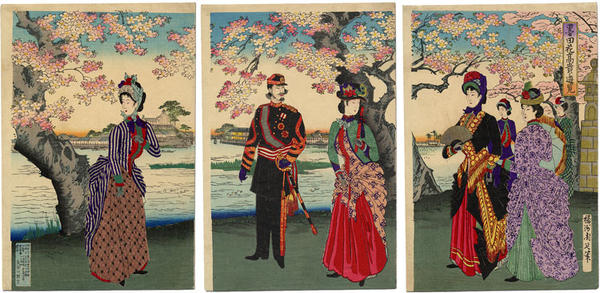The shades of color in art are infinite. However, few hues have evoked such historical significance as the alluring Eau de Nil. A mysterious combination of green and blue undertones that artists, designers, and historians have tried to define since its rise in the 19th century, this color, named after the Nile River’s captivating waters, is ironically elusive. Each attempt to capture its essence has elevated new interpretations, but nothing has fully captured its essence. Much like the actual Nile River, which changes with light, water, and season, Eau de Nil also shifts across contexts and time.
Although Eau de Nil is most popularly associated with Gustav Flaubert, his writings never explicitly mention the color. The closest example is his depiction of the water as yellow-toned when sailing the Nile in Egypt. The name, meaning “water of the Nile,” refers to historical impressions of the river’s surface, which travelers described as a soft, silvery-green hue in certain lights. Yet, as Egyptologists and artisans brought back artifacts and observations, the color’s definition fluctuated with each depiction—often wavering between the soft tones of jade and celadon. This inconsistency made Eau de Nil even more enigmatic, as varying pigments, lighting, and personal interpretations continued to add layers to its mystery. The color’s lack of fixed boundaries, blending blues and greens, echoes the changing moods of the Nile itself—an ever-shifting symbol as mutable as the reflections on the water it is meant to evoke.
This fascination only deepened in the Victorian era, especially within the English and French art and design communities following Napoleon’s 1798 campaign and the Egyptomania in the 19th century. Artists, designers, and explorers began using Eau de Nil to evoke an exotic and romanticized image of the Nile. As more Egyptian artifacts were uncovered and exhibited across Europe, they inspired an enduring color that echoed a distant vision of the river’s water. Still, it was primarily commercial dye and paint manufacturers who solidified the color in modern culture. Paint brands and fabric companies of the 19th and early 20th centuries began reproducing variations of Eau de Nil, cementing it as a fashionable color despite ongoing debate about its exact tone.
Eau de Nil has been featured in various significant paintings throughout art history, especially during its peak during the 19th and early 20th centuries. In addition to Art Deco interiors and posters, Eau de Nil was used as a defining tone, symbolizing modernity and evoking the allure of distant lands. Notable artists like John Singer Sargent in the period of the American Renaissance subtly used shades resembling Eau de Nil in paintings such as Simplon Pass: Reading and The Lady with the Umbrella to enhance a sense of elegance and mystique. Similarly, Eau de Nil makes its appearance in the objects and backgrounds of Impressionist works by Claude Monet, as in The Studio Boat, where it intimately colors the vessel and dissolves as a reflection into the waterway with a combination of yellows, pinks, and violets, emphasizing the beauty of untrammeled nature.
The color represents the Nile River’s depth and sophistication through time, reminding viewers of far-off places and rich histories. Its use across these artworks reinforces its role as a symbol of exploration and the Western fascination with the East. Eau de Nil is a timeless hue, evoking a world where narratives, artistry, and nature converge, making it a color that doesn’t just endure but enriches history, fostering a sense of continuity and connection with the past.
Works Cited
Cielsan. “Lomography – Color Chronicles: Eau de Nil.” Www.lomography.com, 27 Oct. 2018, www.lomography.com/magazine/339463-color-chronicles-eau-de-nil.
jfreeman. “Eau de Nil.” Word Daily, 26 Mar. 2024, worddaily.com/words/eau-de-nil/. Accessed 10 Sep. 2024.
Kelleher, Katy. “Eau de Nil, the Light-Green Color of Egypt-Obsessed Europe.” The Paris Review, 13 Feb. 2018, www.theparisreview.org/blog/2018/02/13/eau-de-nil-light-green-color-egypt-obsessed-europe/.









